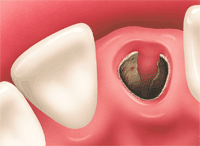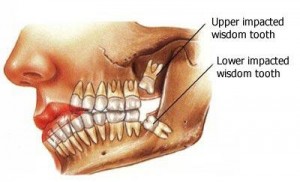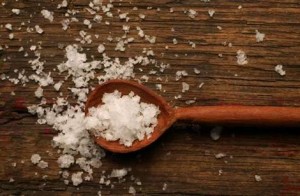Have you ever experienced severe pain a few days after having your teeth extracted with no swelling on your face? Then you may be suffering from dry socket.
What is dry socket?
Dry socket, or otherwise known as alveolar osteitis, is by far the most frequent painful complication of tooth extractions. However it is uncommon overall, affecting only 1 to 3% of extractions. This condition of delayed healing, but not usually associated with infection, is common after wisdom tooth extraction due to the large tooth socket that is left behind which can easily dislodges the blood clot that is formed.
The term ‘alveolar’ refers to the jawbone that supports the teeth, while ‘osteitis’ refers to the inflammation of the bone which is limited to the site involved.
What causes dry socket?
The phenomenon of dry socket is often unpredictable and has been attributed to multiple factors including:
- Excessive trauma during tooth extraction
- Complexity of tooth extraction – Difficult impactions of wisdom teeth frequently lead to painful dry socket.
- Tobacco use – Smoking can delay wound healing by reducing the oxygen supply to the healing tissues.
- Limited blood supply – In a healthy person, dry socket only affects the lower back teeth region where the bone is denser and has less blood supply than elsewhere.
- Excessive vasoconstrictors (agent that causes a narrowing of an opening of a blood vessel) in the anesthetic solution
- Radiotherapy – Radiation can decrease vitality of bone.
- Disease that causes hardening or thickening of bone such as Paget’s disease
- Birth control pills or oral contraceptives – Estrogen component apparently enhances clot disintegration activity.
- Excessive mouth rinsing – Blood clot can easily be dislodged in the process.
In any given case, it is difficult to determine the cause but generally there is failure of blood clot to form in the socket due to premature loss or disintegration of blood clot from extraction socket. Food debris and bacteria will then collect in the empty socket and result in bone inflammation. Healing by granulation tissue will take place but at an extremely slow rate.
Dry socket symptoms
- This condition is more frequently seen in women. Women tend to have a greater risk of developing dry socket compared to men due to their estrogen level which is said to slow down healing of the tooth socket.
- The characteristic symptom of dry socket is the development of severe pain 3 to 4 days after tooth extraction or wisdom teeth removal in the post extraction site. Sometimes pain might be delayed for a week or more, and there could be dull aching, with moderate to severe pain that can spread to the ear region.
- No fever, swelling or lymph nodes involvement.
- The gums around the socket are red and tender.
- The socket appears dry with no blood clot. In place of the clot, the socket is filled with saliva and often decomposing food debris.
- When debris is washed away whitish dead bone may be seen or felt.
- Exposed bone is extremely sensitive and painful.
- Tooth socket has bad odor which may be accompanied by foul taste. The foul smell is caused by the decomposition rather than the orderly resorption of the blood clot that formed in the socket.
Dry socket treatment
Process is self-limiting and should be left to run its course. Pain relief often requires careful irrigation of the socket with saline. A week or more of discomfort should be expected and pain is not due to broken tooth, as usually perceived.
The socket is filled with medicated dressing, usually iodoform gauze which contains eugenol, topical anesthetic and balsam of Peru as a vehicle, to prevent food and debris from accumulating. Relief from pain will be felt within 5 minutes and this pack has to be changed every day or every other day for the next 3 to 6 days depending on the severity of pain. Once the pain decreases, the pack has to be removed from socket since it can act as a foreign body and delay wound healing.
How to prevent dry socket
- Trauma should be minimized during tooth extraction with copious saline irrigation.
- Small amount of antibiotics (tetracycline) can be placed in the socket or on a gelatin sponge to help decrease the incidence of dry socket, especially in those with Paget’s disease or under radiotherapy.
- Maintenance of oral hygiene after wisdom teeth extraction by brushing all non-tender areas regularly and rinsing with warm salt water 24 hours after extraction.
- Avoid drinking through straws or spitting excessively as the negative pressure created can dislodge the clot in the socket.
- Avoid smoking or use of hormonal contraceptives at least 48 hours before tooth extraction.
- Since women at are a higher risk to get dry socket, dentists recommend that female patients have their teeth extracted during the last week of their menstrual cycle, the time when the estrogen levels are the lowest, to minimize formation of dry socket.



